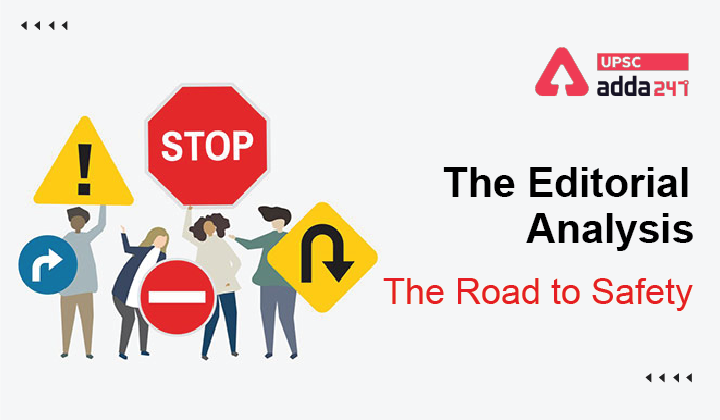Table of Contents
The Road to Safety- Relevance for UPSC Exam
- GS Paper 2: Governance, Administration and Challenges- Government policies and interventions for development in various sectors and issues arising out of their design and implementation.
Road Accidents in India
- Every year, mega Indian cities witness nearly 50,000 accidents. A quarter of them are fatal.
- More than half of these are on account of over speeding and a quarter due to dangerous driving.
- Nearly half of those who lose their lives are pedestrians. Almost half of these avoidable deaths are due to collisions with buses and trucks.
Case study of Delhi
- In the case of New Delhi, road deaths peaked in 2009. Since then, they have gradually tapered despite burgeoning numbers of vehicles.
- This improvement came on the back of commendable interventions by the Delhi Police on black spots, traffic calming measures, and enhanced enforcement.
- The Delhi government has now initiated a drive to enforce lane discipline, starting with strict compliance on the bus lane.
- This required a reorientation in approach by all road users. Buses, like big bullies, hitherto had a free run.
- Now, deviations from the lane invite harsh penalties.
- Driving Licenses: Delhi now has automated driving test centres, which have reduced the margin of human intervention. Consequentially, failure rates (about 40%) are far higher than other cities.
Road Accidents in India – NCRB Report 2020
Eliminating Road Accidents in India
- Effective driver license granting mechanism: A learner’s license, issued after a test on a basic understanding of road signages and traffic rules, is the first requirement. A driving skill test confirms the ability of the driver to wield the wheel.
- An additional step of mandatory simulator tests and psychological evaluation could be embedded in the regulatory framework- more so for drivers of heavy transport vehicles.
- Improving Road Designs: road designs are to be such to accommodate all users fairly.
- Buses must stick to their lanes and stop at designated bus stops.
- Our roads need to make spaces for all users- pedestrians/cyclists, buses, other vehicles- and designate pick-up and drop-off points for taxis and auto rickshaws.
- This entails remodelling our roads with intuitive road designs and signages, which mark out different zones of road usage.
- A pilot stretch has been redesigned collaboratively with IIT Delhi.
- Promoting use of Public Transport: The propensity of people to use personal vehicles instead of public transport also adds to the chaos.
- Some of this is attributable to need for improvement in efficiencies of public transport, but partly on account of personal choices.
- Delhi has the highest per capita registration of personal vehicles — nearly 110 cars per 1,000 people, as against a national average of 25.
- Introducing Mobility as a Service (MaaS) solutions: it will integrate all options of public mobility on a common digital platform.
- A commuter could then choose to hop onto a bus, metro, a cab or an auto.
- A government-backed digital aggregator of all mobility options would make public transport more efficient and provide inbuilt solutions for last-mile and first-mile connectivity.
Conclusion
- Disciplining traffic on roads is a mammoth exercise in collective behavioural change. The onus of change lies as much on citizens as on the government.





 TSPSC Group 1 Question Paper 2024, Downl...
TSPSC Group 1 Question Paper 2024, Downl...
 TSPSC Group 1 Answer key 2024 Out, Downl...
TSPSC Group 1 Answer key 2024 Out, Downl...
 UPSC Prelims 2024 Question Paper, Downlo...
UPSC Prelims 2024 Question Paper, Downlo...





